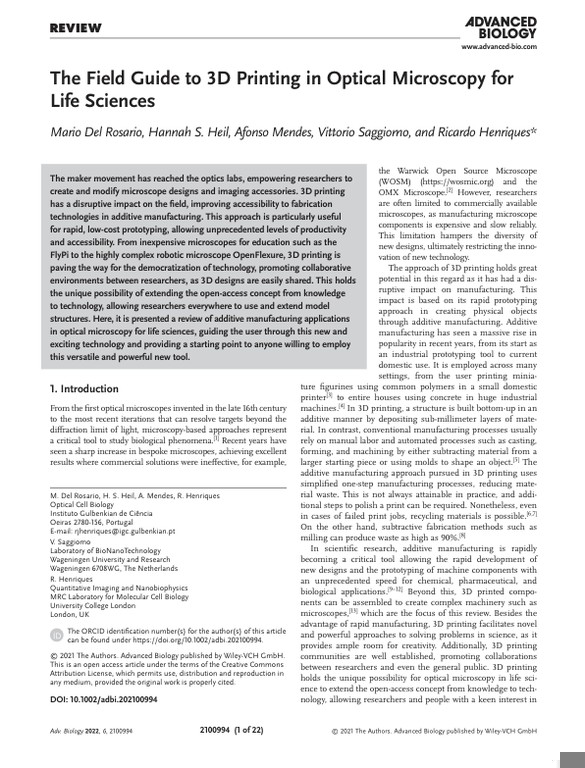The field guide to 3D printing in microscopy
Technologies: CARE (), NanoJ () and NanoJ-Fluidics ()
Review published in Adv. Biol., January 2021

The manuscript "Advances and Challenges in 3D Printing for Microscopy Applications in Life Sciences" explores the current state and future prospects of 3D printing technology in microscopy for life sciences research. The authors highlight the advantages of 3D printing, such as cost-effectiveness, accessibility, and customization, which have led to its increasing use in microscopy applications. However, they also acknowledge the challenges, including the need for material optimization, energy consumption reduction, and waste management. The manuscript provides examples of current applications, such as 3D-printed microscopes and compliant mechanisms, and suggests potential future developments, such as biocompatible materials and large-scale applications. The authors emphasize the importance of collaboration between material scientists and microscopy researchers in advancing the field. Additionally, the manuscript discusses the development of various microtechnologies, including bioprinting, microfluidics, protein separation, and metal nanoparticle production, which have potential applications in life sciences research.